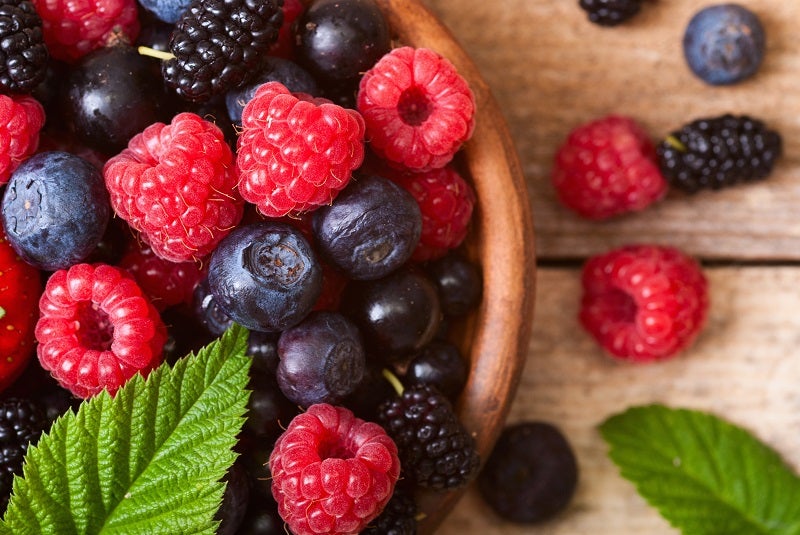
In the food and beverage industry, the word “natural” has been used so many times in so many different ways, from product labels to ads on websites, magazines and commercials. These days, it seems consumers are demanding natural products, flavours and additives more than ever. The world is screaming for all things natural!
But how do we get there and what does the word actually mean? Let’s start from the beginning and concentrate on flavours. Many manufacturers have listened to their customers and considered the trends and are now moving towards producing natural flavours. There are a few ways to achieve a natural flavour, but which one should manufacturers use?
But what is flavour and why should it be natural?
Flavour is a sensory experience starting from the notes captured by your nose to the taste sensation experienced through the mouth. The sensation really starts from all the sensations working together – vision, texture, smell and taste.
We know when we smell a fruit such as an aromatic and juicy strawberry, that we then expect it to taste just like a juicy, sweet strawberry. However, it is not always the case. Take for example the infamous durian – it does not have a pleasant odour but when eaten, brings forth a different perception of the fruit. I know owners of Singaporean hotels would agree if the aroma of durian was attractive there would not be signs stating the fruit is to be only eaten outside. Poor durian lovers!
The demand for healthy food and beverages is increasing around the world and it is no wonder people are looking at fruit – a rich and natural source of vitamins, antioxidants, minerals and fibre. But when it comes to fruit flavours in food and beverages, the majority of consumers have not placed too much thought into the origin of those flavours and whether they are in fact natural.
More and more consumers are waking up and paying particular attention to what is on the label before purchasing, making sure what goes into their body is really sourced from the natural products.
Natural fruit flavours that are now on the market are not new –there are companies already selling them around the world. But are they really what they claim to be: “natural”? The definition of natural is somewhat ambiguous* where products from fruits or highly processed corn syrup can be both labelled “natural”, because their origin source was a fruit or vegetable
Expanding on this further, natural flavours must come from a natural source such as the fruit itself, but they may also come from other sources (such as bark, leaves and essential oils). These are then recombined in some order in a laboratory with the aim of mimicking a particular flavour. So, with that in mind, what’s stopping manufacturers from truly incorporating natural flavours?
One company ahead of the curve is Australian company Flavourtech who have developed the Spinning Cone Column (SCC) to help manufacturers capture natural flavours from fruit, vegetables and herbs.
In order to produce natural flavours and aromas many flavour houses around the world use the SCC, a steam distillation column comprising multiple stages which extract the volatile components such as aroma or flavour from fruits and vegetables in a very gentle process using low temperature steam.
The SCC allows the user to control the temperature of steam by controlling the vacuum pressure around it – increasing the vacuum decreases the steam temperature. So, in this case, low temperature steam is used to extract the natural fruit flavours which means the flavours are safe and intact. These extracted fruit flavours are then concentrated in water and are fully natural so can easily be combined in beverages and food products. And best yet, the whole process takes less than 30 seconds!
Fruit such as strawberry, banana, mango, grape, kiwi, apple, orange, pineapple and many more, have had their flavours extracted and are currently available on the market. The extracted aroma is a powerful version of the real fruit smell.
Flavour houses are already benefiting from the SCC and flavours are being added to beverages and foods to provide the natural aroma that consumers are looking for.
Let’s go through the science of the SCC in a bit more detail.

Figure 1. Spinning Cone Column (SCC) internal. Green represents the fruit material, blue the volatile flavours and steam being extracted.
The internals of the SCC comprise alternating stationary and spinning cones. Fruit purée, for example, is fed into the top of the column where it falls onto the first stationary cone, in a thin film under gravity. It then drops onto a spinning cone directly underneath where it is flung outwards and upwards, again in a thin film, due to centrifugal force. This will continue alternating down the column. At the same time, steam under vacuum will travel up the column (counter current) taking with it the volatile natural flavours where it leaves the column, condensed and safely stored.
But it is not just fruit the SCC can extract flavours from. Customers are also using the SCC to capture flavours from coffee, tea, vegetables, spices, herbs and roots. You are most likely drinking an instant coffee or tea with flavour captured by the Flavourtech SCC.
We all want or dream of a healthier lifestyle and so having food or beverage that will help provide this is something we all should have access to and benefit from. Flavourtech’s SCC can provide this for you and your customers. And if you can benefit customers’ health while boosting profit’s everyone’s a winner.
To find out more about the SCC method, please download the white paper available at the bottom of this article.
*(Journal: Appetite, “Naturally good: Front-of-package claims as message cues” by Christine Skubisz (2017), 108, 506 – 511)









